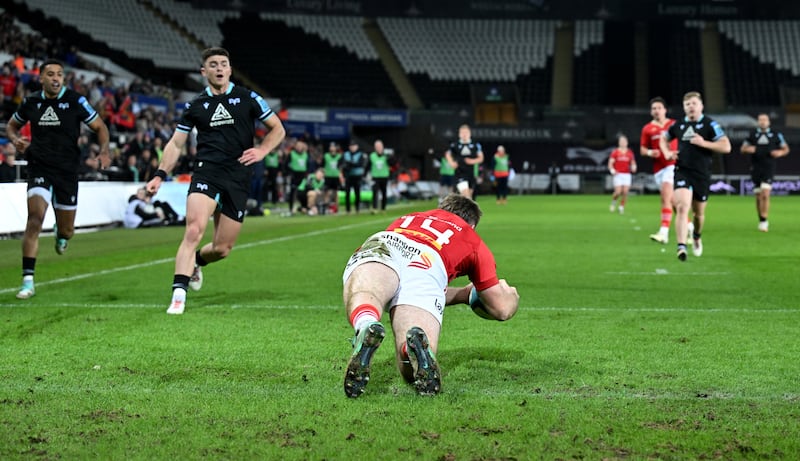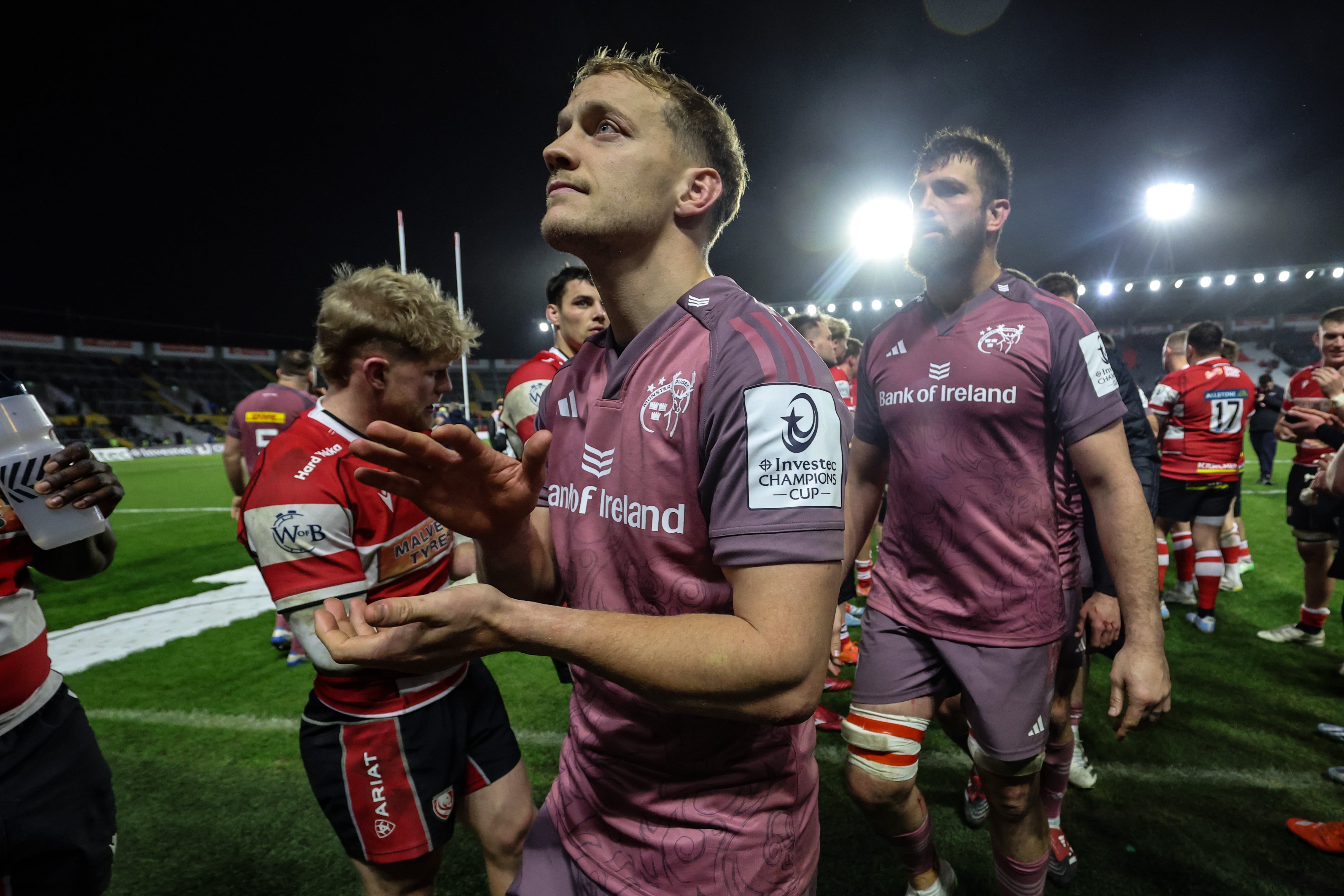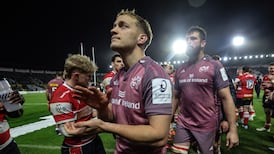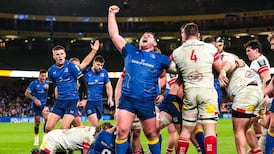When Munster reached their first Heineken Cup final, 24 years ago now, their centre partnership was a pair of players born in New Zealand: Mike Mullins from Auckland and Jason Holland from New Plymouth. Neither of them had arrived as stars, and in professional rugby’s fledgling transfer market, nobody saw Munster as hawks. They didn’t have that kind of money, or status.
Holland had been recruited by Midleton to play in the All-Ireland League, which was where he came to Munster’s attention. Mullins had a Limerick-born Dad who left Ireland in the 1960s, and though he had a world of cousins in Limerick, he arrived at the place of his father’s birth by accident.
After six years of semi-professional rugby in New Zealand he tried his luck in England with Waterloo and West Hartlepool, two clubs that over-reached and were torpedoed by financial mismanagement. Remarkably, though, Mullins was noticed by Warren Gatland, the Ireland coach at the time, and he guided him to a safe harbour.
Holland and Mullins were both in their late 20s when they played in the 2000 Heineken Cup final and there was something exotic about their presence in the team. Mullins was a soulful character with a passion for painting. Holland put down roots in Cork and stayed for many years after he finished playing.
READ MORE
In the end, Mullins played 16 times for Ireland and Holland won a cap with Ireland A. They weren’t guns for hire, passing through on their way to somewhere else; they felt an attachment that held them here.
A lot of water has passed under the bridge since then but over the last few months, Munster’s season has been energised by another unlikely partnership in the centre. Antoine Frisch arrived at the beginning of last season, French-born, with an Irish grandmother, cradling an ambition to play for Ireland, he said.
For Munster to have two non-Irish quailified players in the same position would be against the IRFU’s recruitment policy
Alex Nankivell landed at the beginning of this season, partly because he wanted to have an overseas experience, and partly because, at 27 years of age, he was tired of waiting for the All Blacks to call.
There was no way of knowing if there would be chemistry between them, but their relationship has flourished. How long will it last? How long will they stay? One? Both? What will Munster do when they break-up?
When Frisch was called into a France training squad during the Six Nations these questions bubbled suddenly to the surface. If Frisch was capped by France he would obviously be no longer available to Ireland. For Munster to have two non-Irish qualified players in the same position would be against the IRFU’s recruitment policy. In that case, something would have to give.
The bigger issue for Munster though, is leaving themselves exposed to a situation like this. If Frisch or Nankivell leaves, or is forced to leave, Munster will almost certainly return to the market in search of a solution. Of their in-house options, Rory Scannell is nearing the end of a long and admirable career, and Sean O’Brien has the profile of a useful squad player. On Friday night, he had a blinder on the wing.

He came by the road less travelled: Mullingar, Clontarf, Connacht, Exeter, Munster. Not a product of the academy.
This is not a recent development. Munster’s consistent, inexplicable, long-term failure to produce international-class, home-grown centres has haunted their player pathways for decades. Before the concept of player pathways was invented. Before professionalism.
The most recent Munster players to be established Test centres for Ireland were Michael Kiernan and Phil Danaher; Danaher won his last cap in 1995, four years after Kiernan. Since then John Kelly has played some games for Ireland in the centre, not as a first choice, and when Keith Earls occasionally showed up there he was just filling in.
Between them Barry Murphy and Scannell have seven international appearances and Chris Farrell was capped in the centre while he played for Munster too, but Farrell was signed from France, having been a product of the Ulster academy. He was another imported solution.
Is there any sign of a turning in the road? On the Ireland Under-20 teams that won back-to-back Grand Slams in recent years there were no Munster centres in the picture
Think of all the really good Munster teams of the professional era and the players who wore 12 or 13: Mullins, Holland and Rob Henderson – who joined from Wasps – were central to Munster’s early adventures in Europe.
When Munster finally won the Heineken Cup in 2006, a South African, Trevor Halstead, partnered Kelly; when they won it again two years later Rua Tipoki and Lifeimi Mafi was the centre pairing. Mafi was still on board when they won the Magners League in 2011.
Farrell overlapped with Damian de Allende, who landed for a couple of seasons, in between winning World Cups with South Africa. And when Munster ended a 12-year losing streak in last year’s URC final, the centre pairing was Frisch and Malakai Fekitoa, a Tongan-born player who won 24 caps for New Zealand. He signed for two years and stayed for one. Munster went back to the market.
[ Denis Walsh: Bruised Ireland can recover from unique Rugby World Cup failureOpens in new window ]
Compare that to Leinster – the only comparison that matters to Munster and the one that wounds them most grievously. Gordon D’Arcy and Brian O’Driscoll were Leinster’s centre pairing for three of their Heineken Cup triumphs while Garry Ringrose and Robbie Henshaw was the centre pairing for the other. Henshaw was poached from Connacht but he was a product of the Irish system at least.
For Munster this has been a bewildering blind spot. In the professional era, Munster have been mass producers of international class half-backs and second rows and backs rows but their inability to develop top-class centres has been astonishing.
Is there any sign of a turning in the road? On the Ireland Under-20 teams that won back-to-back Grand Slams in recent years there were no Munster centres in the picture. On the academy page of the Munster website only one player, Fionn Gibbons, is listed as a centre.
Long term? When Pres and Christians shared 64 points in a scintillating Munster schools final recently two of the best players on the field were the Pres centres. One of them is expected to go straight into the Munster academy.
But they’re schoolboys with exciting potential. What happens when Frisch and Nankivell break up? Back to the market.
Madness.

















